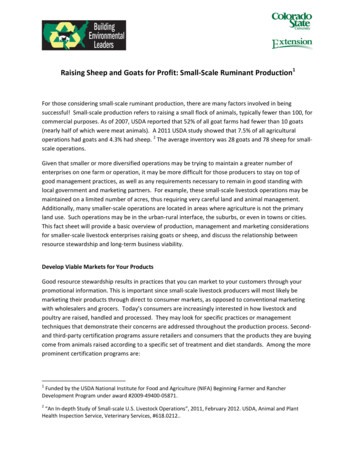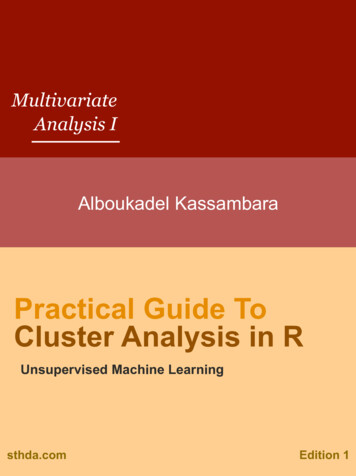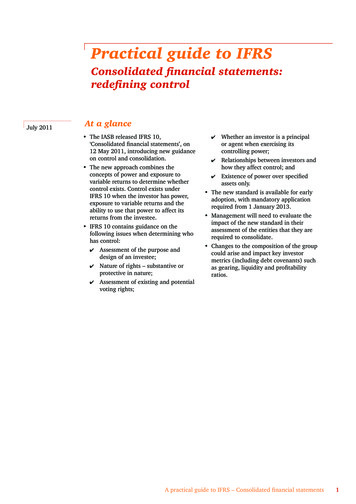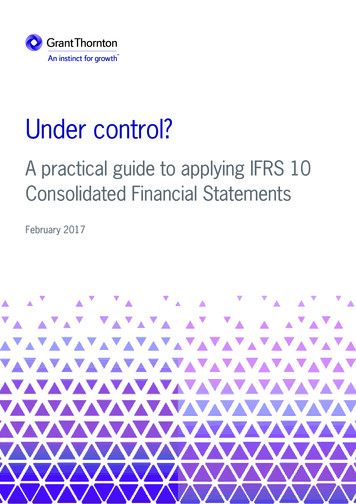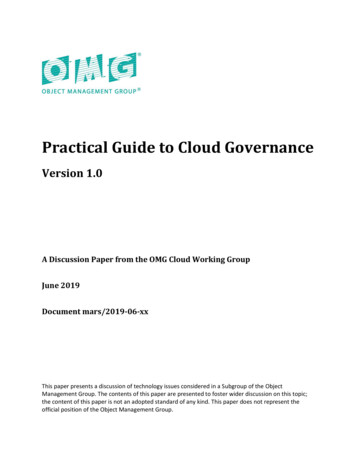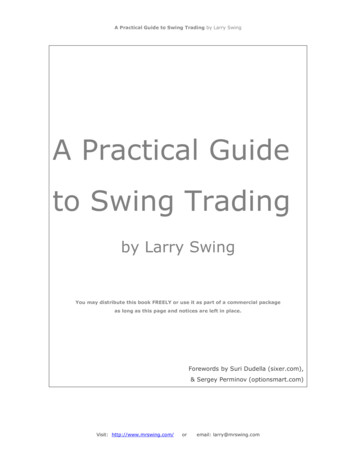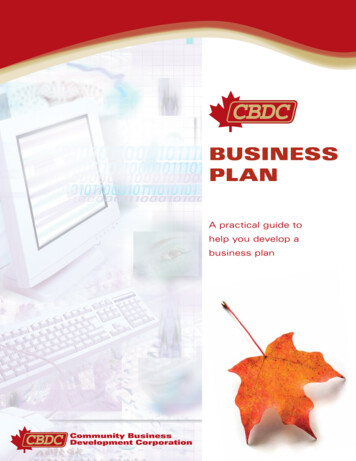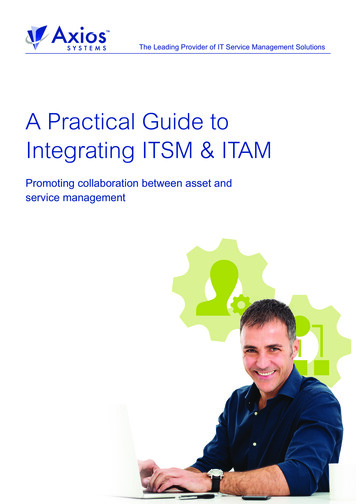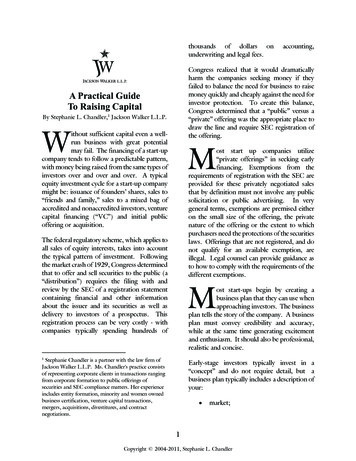
Transcription
thousands of dollars onunderwriting and legal fees.accounting,Congress realized that it would dramaticallyharm the companies seeking money if theyfailed to balance the need for business to raisemoney quickly and cheaply against the need forinvestor protection. To create this balance,Congress determined that a “public” versus a“private” offering was the appropriate place todraw the line and require SEC registration ofthe offering.A Practical GuideTo Raising CapitalBy Stephanie L. Chandler,1 Jackson Walker L.L.P.Without sufficient capital even a wellrun business with great potentialmay fail. The financing of a start-upcompany tends to follow a predictable pattern,with money being raised from the same types ofinvestors over and over and over. A typicalequity investment cycle for a start-up companymight be: issuance of founders’ shares, sales to“friends and family,” sales to a mixed bag ofaccredited and nonaccredited investors, venturecapital financing (“VC”) and initial publicoffering or acquisition.Most start up companies utilize“private offerings” in seeking earlyfinancing. Exemptions from therequirements of registration with the SEC areprovided for these privately negotiated salesthat by definition must not involve any publicsolicitation or public advertising. In verygeneral terms, exemptions are premised eitheron the small size of the offering, the privatenature of the offering or the extent to whichpurchasers need the protections of the securitieslaws. Offerings that are not registered, and donot qualify for an available exemption, areillegal. Legal counsel can provide guidance asto how to comply with the requirements of thedifferent exemptions.The federal regulatory scheme, which applies toall sales of equity interests, takes into accountthe typical pattern of investment. Followingthe market crash of 1929, Congress determinedthat to offer and sell securities to the public (a“distribution”) requires the filing with andreview by the SEC of a registration statementcontaining financial and other informationabout the issuer and its securities as well asdelivery to investors of a prospectus. Thisregistration process can be very costly - withcompanies typically spending hundreds ofMost start-ups begin by creating abusiness plan that they can use whenapproaching investors. The businessplan tells the story of the company. A businessplan must convey credibility and accuracy,while at the same time generating excitementand enthusiasm. It should also be professional,realistic and concise.1Stephanie Chandler is a partner with the law firm ofJackson Walker L.L.P. Ms. Chandler's practice consistsof representing corporate clients in transactions rangingfrom corporate formation to public offerings ofsecurities and SEC compliance matters. Her experienceincludes entity formation, minority and women ownedbusiness certification, venture capital transactions,mergers, acquisitions, divestitures, and contractnegotiations.Early-stage investors typically invest in a“concept” and do not require detail, but abusiness plan typically includes a description ofyour: market;1Copyright 2004-2011, Stephanie L. Chandler
business, productsproperties, etc.; capitalization and securities being sold; managementshareholders; material risks; selected financial data and financialstatements; and some type of discussion and analysis ofthe financial situation and operations ofthe company.orandservices,principalStatements of fact should be supported as factand statements of opinion must have areasonable basis. When it comes to discussingrisks and uncertainties do not hide the ball frominvestors for to do so will impair yourcredibility. Remember that even exempttransactions are subject to the antifraudprovisions of the federal securities laws.Depending on the size of the offering and thenature of the purchasers, more or lessdocumentation than a basic business plan maybe required. Typical documents in a privatefinancings may include: Term sheet - contains the essential termsof the investment and business terms ofthe transaction, such as type of security,valuation/price, liquidation preference,conversion rights, registration rights,pre-emptive rights/rights of first refusal,voting rights, seats on the board ofdirectors and dividends. Although termsheets are not always used, using onewill likely save you time and money inthe long run because a term sheet helpsthe parties focus on key issues that needto be documented. Business plan or PPM2 - describes thebusiness, products/services, and risksand may provide financial information. Board of director resolutions - authorizestransaction, reserves shares, etc. Stock purchase agreement - sets out theterms, representations and warranties ofthe parties and conditions of closing.Establishes the factual basis forexemption under federal securities laws. Certificate of designations/amended andrestated articles of incorporation - sets outthe rights, preferences and privileges ofpreferred stock sold to investors. Investors’ rights agreement - sets outrights of investors such as registrationrights and rights of first refusal. Co-sale agreement - sets out rights ofinvestors to share in any premium andparticipate in sales of the company’sstock by founders and other majorstockholders. Warrant - contractual right given topurchaser to buy a specified number ofshares at a specified price. Sometimesoffered as a kicker to lower the effectiveprice of the securities purchased.As discussed above, every offering ofequity in your company must either beregistered with the SEC or fall under anexemption to the registration requirements.You need to contact counsel to determinewhich exemptions from the registration2A private placement memorandum (“PPM”) is notrequired for every offering. For example, if more than 1 million is raised in a 12-month period, such that thelimitations of Rule 504 are surpassed, a PPM would berequired to offer securities to nonaccredited investors inreliance on certain exemptions. An offering to “allaccredited” investors by comparison does not require aPPM. Even if not required, delivering a PPM or at leasta detailed business plan is probably advisable for liabilityand marketing reasons.2Copyright 2004-2011, Stephanie L. Chandler
requirements of the federal securities laws areavailable for the potential financing. If allconditions of the exemption are not met, thesale will not be exempt and purchasers may beentitled to a refund of their purchase price. Thefollowing is a general description of the mostcommon federal exemptions:prospectus. Like registered offerings, thesecurities can be offered publicly and are not“restricted,” meaning they are freely tradeablein the secondary market after the offering. Theprincipal advantages of Regulation A offerings,as opposed to full registration, are:Section 4(2) - the private-offering exemption.Section 4(2) of the Securities Act exempts fromregistration “transactions by an issuer notinvolving any public offering.” To qualify forthis exemption, the purchasers of the securitiesmust: have sufficient knowledge andexperience in finance and businessmatters to evaluate the risks and meritsof the investment (“sophisticatedinvestor”), or be able to bear theeconomic risk of investment; have access to the type of informationnormally provided in a prospectus; and agree not to resell or distribute thesecurities to the public. the financial statements are simpler anddo not need to be audited; there are no Exchange Act reportingobligations after the offering (unless thecompany has more than 10 million intotal assets and more than 500shareholders); companies may choose among threeformats to prepare the offering circular,one of which is a simplified questionand-answer document; and you may “test the waters” (makelimited general solicitations) todetermine if there is adequate interest inyour securities before going throughthe expense of filing and review withthe SEC.Regulation A offerings historically have notbeen popular with investors, probably becausethere are other exemptions that are easier touse.In addition, no form of public solicitation orgeneral advertising, such as an offering madevia the Internet, may be used in connectionwith the offering.Regulation D. The three exemptions fromSecurities Act registration under Regulation Dare Rule 504, Rule 505 and Rule 506.Regulation A. Section 3(b) of the Securities Actauthorizes the SEC to exempt from registrationsecurities offerings based purely on their smallsize. Regulation A was created under Section3(b) to exempt public offerings not exceeding 5 million in any 12-month period. If you relyon this exemption, you must file an offeringstatement (called a “Form 1-A”) with the SECfor review. The offering statement consists of anotification, offering circular and exhibits. Regulation A offerings share manycharacteristics with registered offerings. Forexample, you must provide purchasers with anoffering circular that is similar in content to aRule 504 provides an exemption for theoffer and sale of up to 1 million ofsecurities in a 12-month period. Likethe other Regulation D exemptions,you may not use public solicitation oradvertising to market the securities. Itis important, as with any privateoffering, that purchasers receive“restricted” securities, meaning thatthey may not sell the securities withoutregistration or an applicable exemption.3Copyright 2004-2011, Stephanie L. Chandler
Rule 504 is the typical means toaccomplish a “friends and family” or“seed capital” offering. 3 Rule 505 provides an exemption foroffers and sales of securities totaling upto 5 million in any 12-month period.Under this exemption, you may sell toan unlimited number of “accreditedinvestors”3 and up to 35 other personswho do not need to satisfy thesophistication or wealth standardsassociated with other exemptions.Purchasers must buy for investmentonly, and not for resale. The issuedsecurities are “restricted.” You may notuse general solicitation or advertising tosell the securities. you cannot use general solicitationor advertising to market thesecurities; you can sell securities to anunlimited number of accreditedinvestors--that is, they must havesufficient knowledge and experiencein financial and business matters tomake them capable of evaluating themerits and risks of the prospectiveinvestment; you must give nonaccreditedinvestors disclosure documents thatgenerally are the same as those usedin registered offerings; and financial-statement requirementsare the same as for Rule 505.An “accredited investor” is: a bank, insurance company, registeredinvestment company, business developmentcompany, or small business investmentcompany; an employee benefit plan, within the meaning ofthe Employee Retirement Income Securities Act,if a bank, insurance company, or registeredinvestment advisor makes the investmentdecisions, or if the plan has total assets in excessof 5 million; a charitable organization, corporation orpartnership with assets exceeding 5 million; a director, executive officer or general partner ofthe company selling the securities; a business in which all the equity owners areaccredited investors; a natural person with a net worth of at least 1million (not including the equity in the personalresidence); a natural person with income exceeding 200,000 in each of the two most recent yearsor joint income with a spouse exceeding 300,000 for those years and a reasonableexpectation of the same income level in thecurrent year; or a trust with assets of at least 5million, not formed to acquire the securitiesoffered, and whose purchases are directed by asophisticated person.Rule 506 is a “safe harbor” for theprivate offering exemption. Purchasersreceive “restricted” securities. Thefollowing standards must be followedthe amount of capital that can be raisedunder the exemption is unlimited:Section 4(6) of the Securities Act exempts fromregistration offers and sales of securities toaccredited investors when the total offeringprice is less than 5 million. This exemptionalso does not permit any form of advertising orpublic solicitation. There are no documentdelivery requirements.Rule 701 is a particularly useful exemption. Itexempts sales of securities if made tocompensate employees according to a writtenplan of compensation. The exemption isavailable only to private companies that are notsubjecttoExchangeActreportingrequirements. It is useful because it frequentlywill exempt sales to employees that are nototherwise qualified purchasers under Section4(2). As with any exempt offering, employeesreceive “restricted securities” in these4Copyright 2004-2011, Stephanie L. Chandler
Rtransactions and may not freely offer or sellthem to the public.aising capital is one of the mostimportant activities that emergingcompanies engage in.To besuccessful, it requires planning, goodcounseling and common sense. As you can see,many of the legal requirements are complex andinterrelated. However, there are things you cando to benefit your cause and to move theprocess along. You can begin by writing agood business plan, or retaining someone whois experienced in preparing business plans toassist you, and keeping corporate records anddocuments in good order for review.It should also be noted that an offering that isexempt under the federal securities laws is notnecessarily exempt from state securities laws.State exemptions do, however, generally parallelfederal exemptions.Often there is arequirement to pay a filing fee, supply statesecurities regulators with a copy of the offeringdocument and make a filing with states inwhich securities are offered and sold.The parties to an equity investment havedivergent interests to consider. You, asthe founder may want to minimize thedilution you will suffer as a result of fundingyour business. You may also want to maintainsufficient control over and avoid unnecessaryrestraints on the direction of your bus
business certification, venture capital transactions, mergers, acquisitions, divestitures, and contract negotiations. thousands of dollars on accounting, underwriting and legal fees. Congress realized that it would dramatically harm the companies seeking money if they failed to balance the need for business to raise money quickly and cheaply against the need for investor protection. To create .
